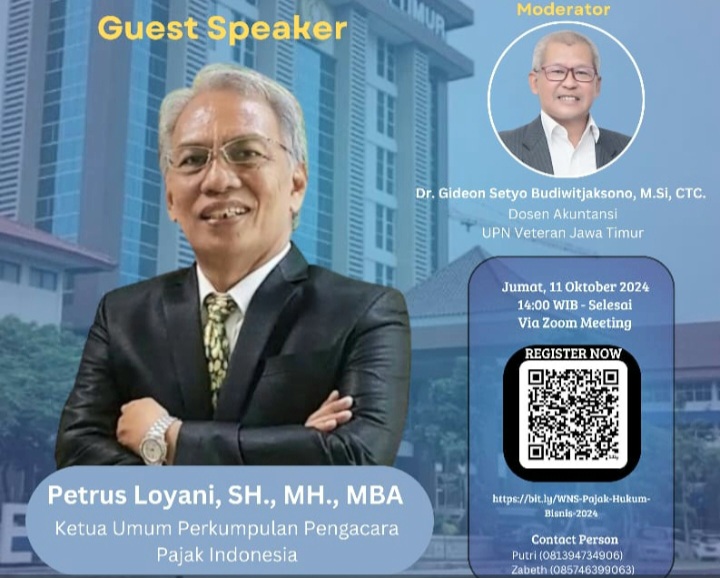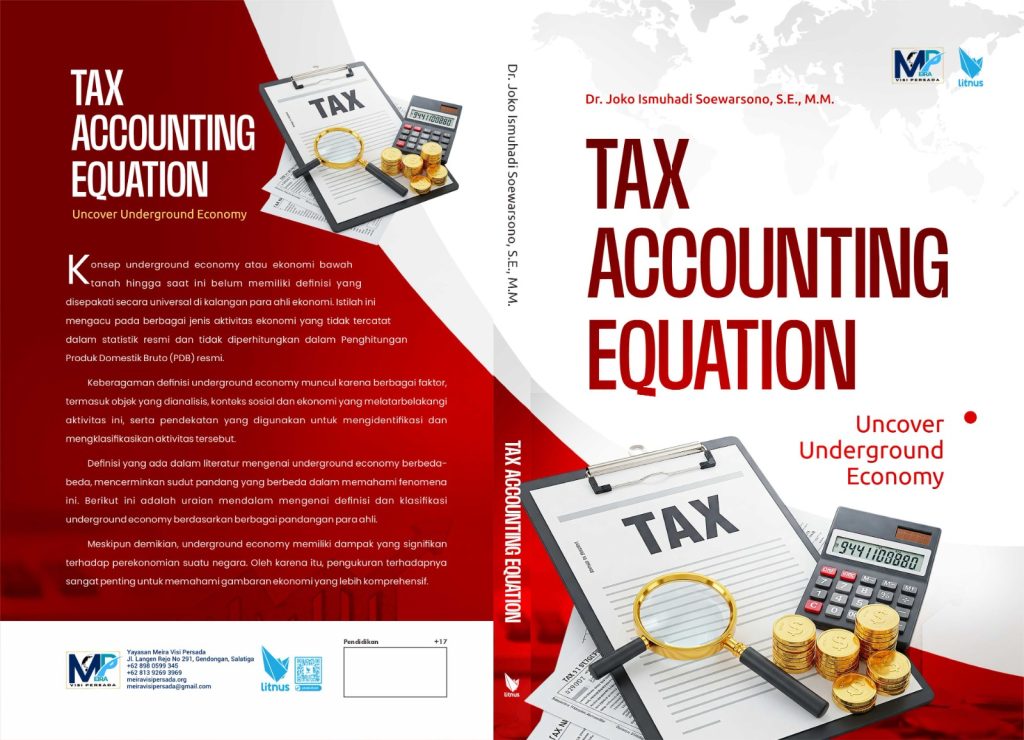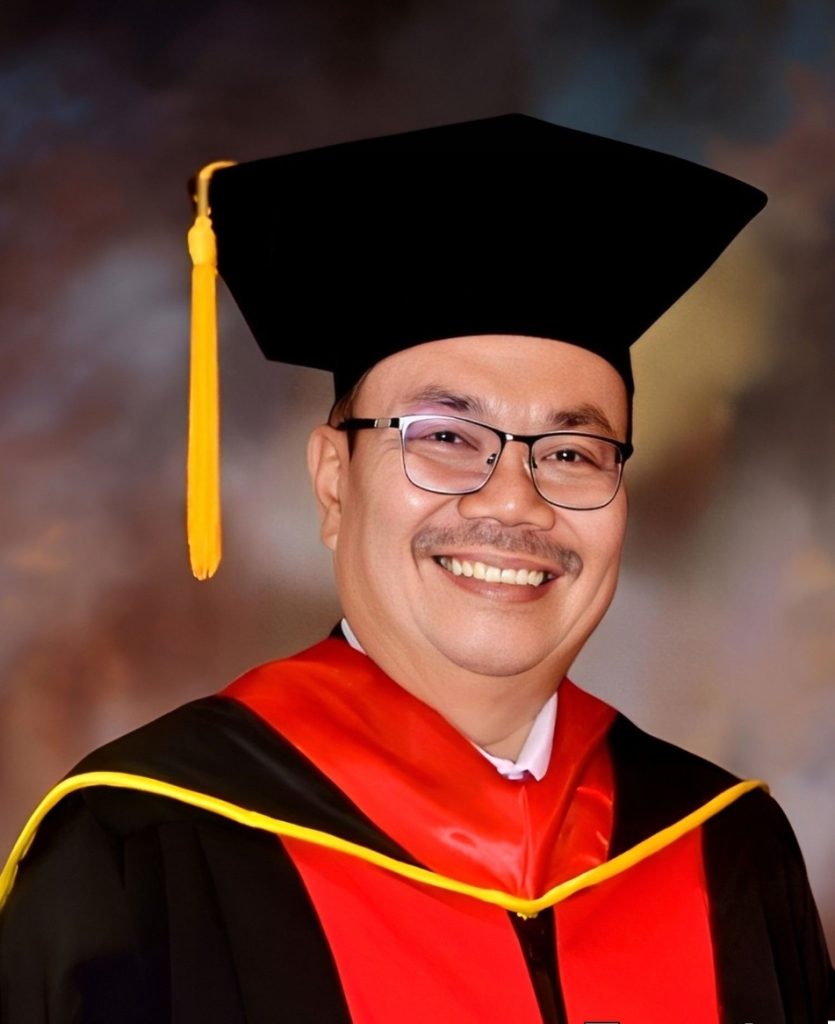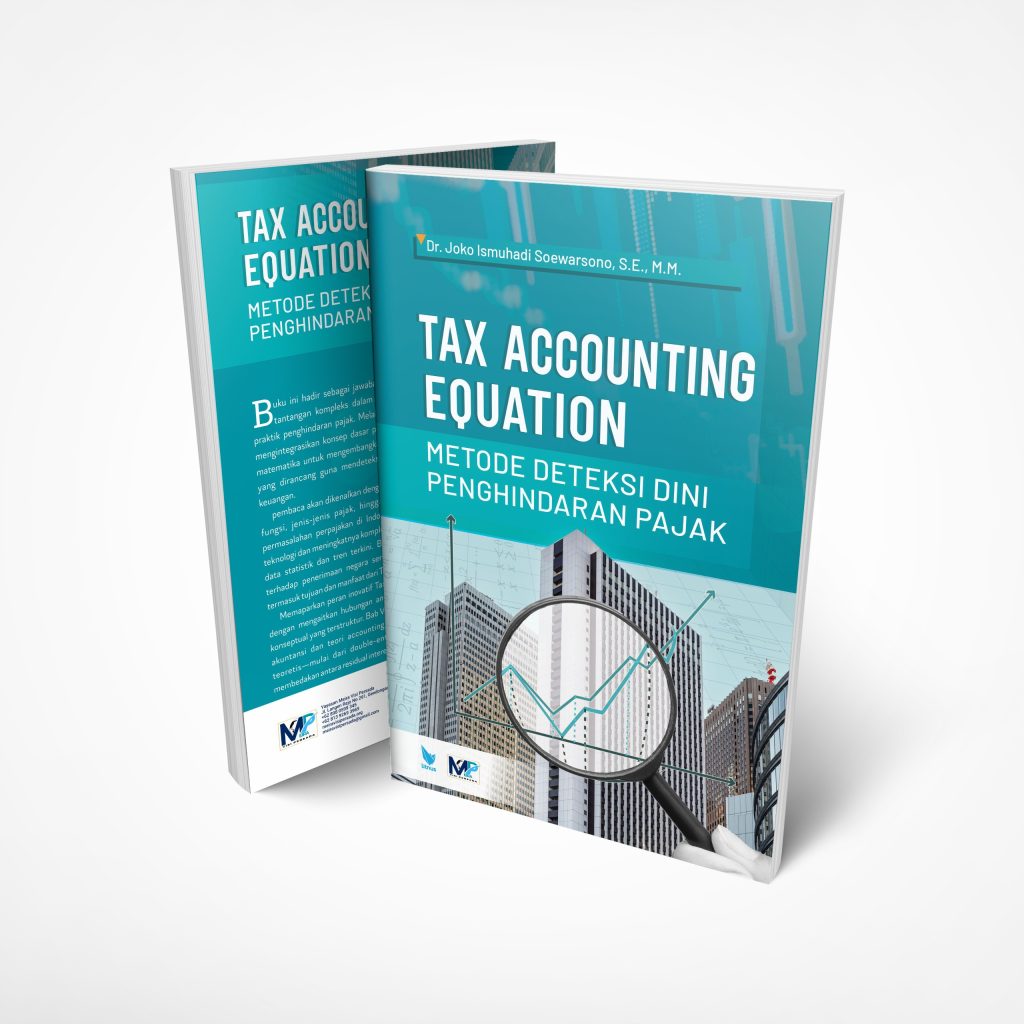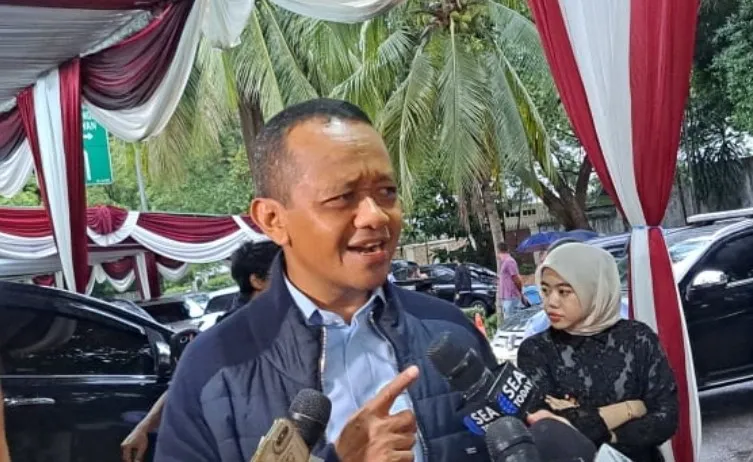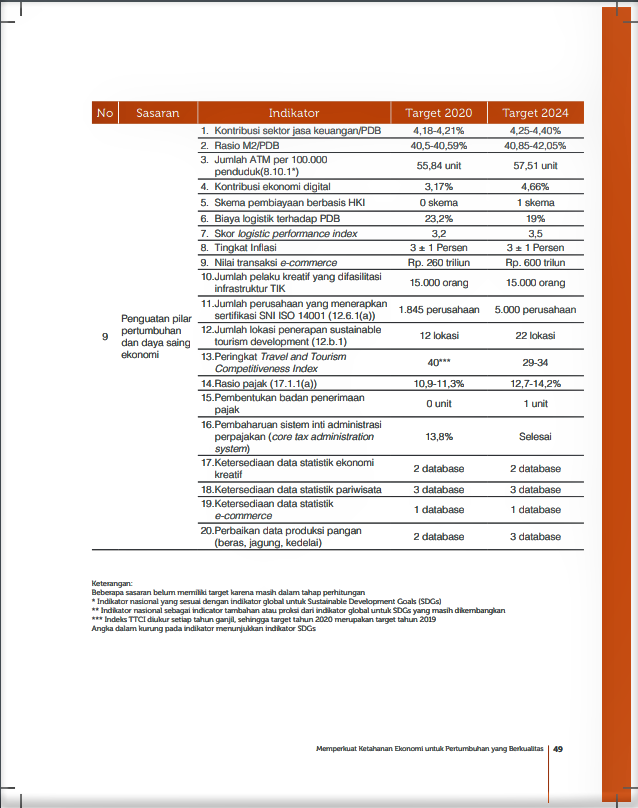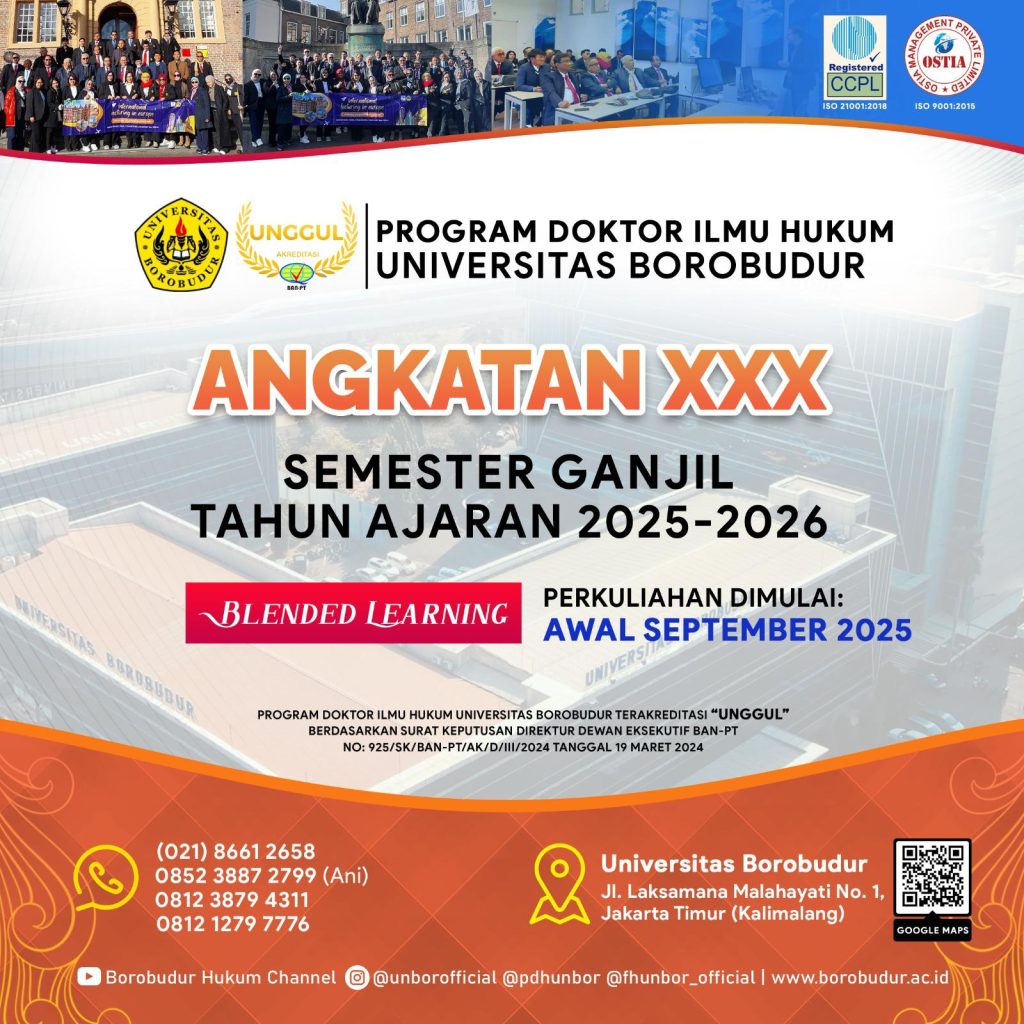
Unveiling Underground Economy Activity: An Analysis of Dr. Joko Ismuhadi’s Tax Accounting Equation
- Ekonomi
Sunday, 23 March 2025 02:32 WIB
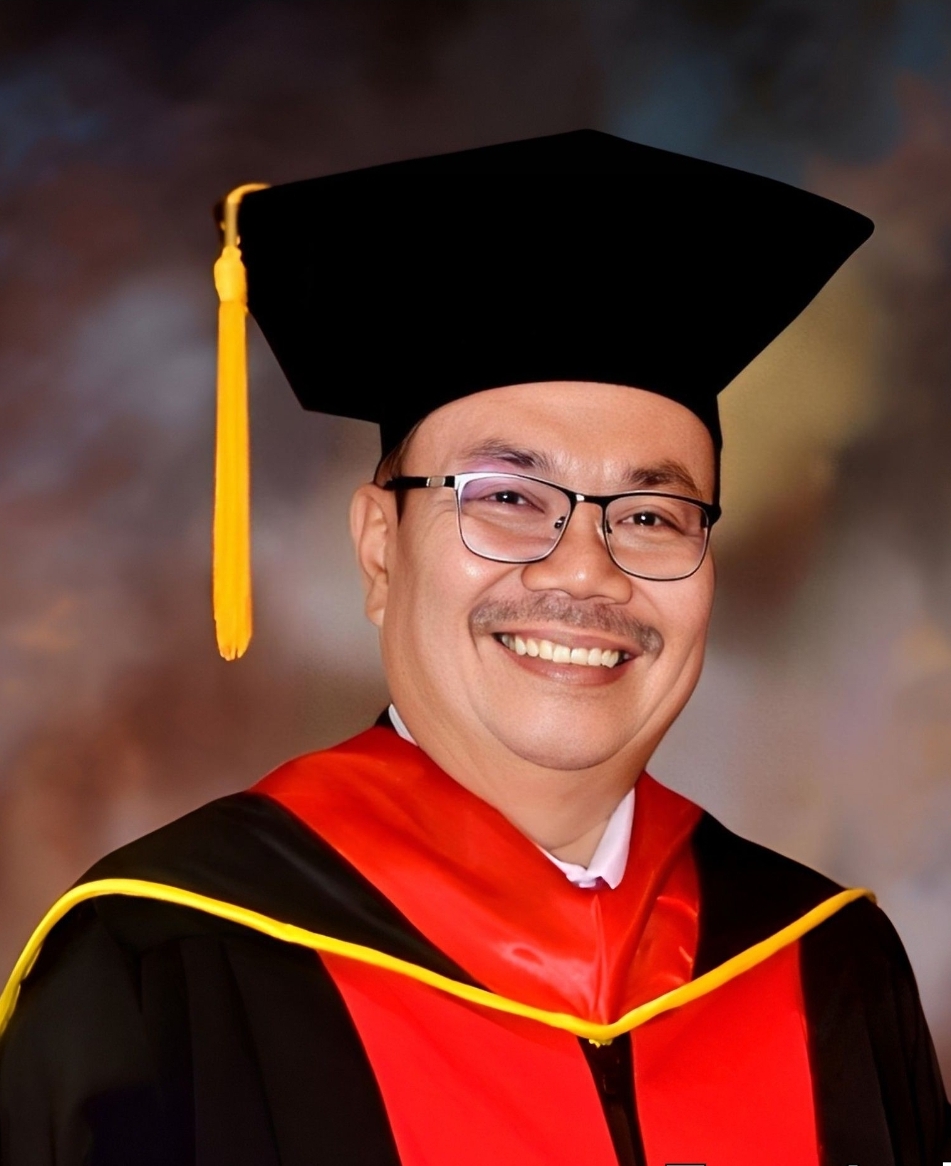
Jakarta, fiskusnews.com:
I. Introduction: The Significance of Addressing the Underground Economy in Indonesia
The underground economy, also referred to as the shadow economy, black market, or informal economy, encompasses economic transactions that operate outside the purview of governmental reporting and regulation . This includes activities deemed illegal due to the nature of the goods or services traded, as well as legal transactions intentionally concealed to avoid compliance with tax obligations and other governmental requirements . The very nature of this sector, characterized by its lack of official records and reporting, makes it exceptionally challenging to measure its true scale . However, evidence suggests that the underground economy represents a substantial portion of economic activity in many nations, including Indonesia.
Recent assessments by the Indonesian government indicate a significant potential for tax revenue generation by addressing the shadow economy, with estimates suggesting it could constitute between 30% and 40% of the nation’s Gross Domestic Product (GDP) . This substantial figure underscores the critical importance for Indonesian policymakers to develop effective strategies for identifying, understanding, and potentially formalizing these clandestine economic activities. The primary motivation for participation in the underground economy often lies in the desire to evade taxes, labor regulations, and administrative burdens . Consequently, the development of innovative methods for detecting and quantifying this hidden economic realm is of paramount importance for ensuring fiscal health and equitable taxation within Indonesia.
Tax accounting, defined as the rules, procedures, and processes undertaken to prepare tax returns and payments, plays a fundamental role in ensuring transparency and compliance within the formal economy . The bedrock of this discipline lies in fundamental principles such as the accounting equation (Assets = Liabilities + Equity), which underpins the double-entry accounting system and ensures a balanced reflection of a company’s financial position . However, these traditional accounting principles are inherently designed to capture and analyze reported economic activity. The core challenge, therefore, lies in adapting or expanding these established frameworks to gain insights into the inherently unreported nature of the underground economy. Any attempt to analyze this hidden sector through an accounting lens necessitates the development of novel approaches capable of inferring economic activity in the absence of direct reporting.
II. Dr. Joko Ismuhadi: An Expert Profile
Dr. Joko Ismuhadi Soewarsono has established himself as a prominent figure within the Indonesian tax and legal academic landscape. His academic journey culminated in the attainment of a doctorate from Universitas Borobudur . Furthermore, his association with the Accounting Science Doctoral Program at the Faculty of Economics & Business, Padjadjaran University, suggests a deep and sustained engagement with advanced studies in accounting . This robust academic foundation is complemented by his active involvement in key national professional organizations, including the Perkumpulan Tax Center dan Akademisi Pajak Seluruh Indonesia (Pertapsi) and the Perserikatan Ahli Hukum Indonesia (Perkahi) . These affiliations highlight his commitment to both the academic and practical aspects of taxation within Indonesia.
Beyond his academic pursuits, Dr. Ismuhadi brings a wealth of practical experience to his research. He is identified as an experienced tax auditor , and his profile on ResearchGate explicitly states his role as a Tax Auditor at the Directorate of General Tax in Jakarta, Indonesia, a position he has held since August 2008 . This extensive professional involvement within the Indonesian tax authority provides him with firsthand insights into the challenges of tax administration, compliance, and evasion. This dual perspective, combining academic rigor with practical real-world experience, likely informs his research and the innovative solutions he proposes.
While some of Dr. Ismuhadi’s publicly listed publications fall outside the immediate domain of tax accounting and the underground economy, his broader research interests and expertise clearly align with these areas. He co-authored a conference paper titled “Intellectual Property Rights on Traditional Knowledge,” affiliated with Universitas Borobudur , and another on “Legal Protection for Default Debtors in Online Loan Agreements” . However, his Scribd uploads include a document referencing the historical development of double-entry bookkeeping, indicating an interest in foundational accounting principles . Notably, he is also identified as a doctoral candidate in both tax criminal law and tax accounting , explicitly confirming his research focus on taxation. Furthermore, his ResearchGate profile lists “tax planning,” “taxes,” and “financial engineering” among his key skills , and a presentation he uploaded touches upon “tax reforms in Indonesia” . These indicators collectively demonstrate a strong research focus and expertise in taxation, encompassing both legal and accounting dimensions, within the specific context of Indonesia.
Table 1: Dr. Joko Ismuhadi’s Professional Profile
| Affiliation | Role/Title | Relevant Snippet(s) | Key Information |
| Universitas Borobudur | Doctoral Graduate | Awarded a doctorate. | |
| Universitas Padjadjaran | Doctoral Program (Accounting Science, Faculty of Economics & Business) | Involved in doctoral studies related to accounting. | |
| Perkumpulan Tax Center dan Akademisi Pajak Seluruh Indonesia (Pertapsi) | Member | Active participant in a national tax academic organization. | |
| Perserikatan Ahli Hukum Indonesia (Perkahi) | Member | Affiliated with a national legal professional organization. | |
| Directorate of General Tax | Tax Auditor | Holds a long-standing professional position within the Indonesian tax authority since August 2008. |
III. Deconstructing the Tax Accounting Equation
The genesis of Dr. Joko Ismuhadi’s Tax Accounting Equation (TAE) can be traced back to his doctoral research at Universitas Padjadjaran . His formulation of this equation, expressed as Revenues – Expenses = Assets – Liabilities (or equivalently, Revenues = Expenses + Assets – Liabilities), was driven by observations of taxpayers who consistently reported financial losses yet did not face bankruptcy . This apparent contradiction between reported income and financial solvency suggested the potential for unreported income or other financial activities not fully captured by traditional accounting metrics. The TAE appears to be a novel adaptation or reformulation of the fundamental accounting equation (Assets = Liabilities + Equity) , tailored specifically for taxation purposes to potentially identify discrepancies indicative of tax evasion.
The core logic of the TAE lies in its focus on the relationship between the income statement (represented by Revenues and Expenses) and the balance sheet (represented by Assets and Liabilities) . In principle, a taxpayer’s reported revenues, after deducting expenses, should ultimately contribute to changes in their net worth, reflected in the difference between their assets and liabilities (i.e., their equity). If a taxpayer consistently reports losses (where Expenses exceed Revenues), one would typically expect to see a corresponding decrease in their net assets or an increase in their liabilities. Conversely, if an entity maintains or increases its assets while not significantly increasing its liabilities despite reporting ongoing losses, it could suggest the presence of undeclared revenue streams that are not reflected in the income statement but are contributing to an improved balance sheet position.
Dr. Ismuhadi proposes the TAE as a tool for tax authorities to identify potential underreporting of income . Based on this equation, he identified a perceived legal gap within Article 4 paragraph (1) of the Indonesian Income Tax Law (UUPPh) . He advocates for a revision to this article to include the phrase “atau untuk mengurangi utang (liabilities)” (or to reduce debt/liabilities) . This proposed amendment suggests that Dr. Ismuhadi believes the current legal framework might not adequately recognize the reduction of liabilities as a potential indicator of taxable income. His rationale is that significant debt reduction, particularly in the context of low reported income, could be funded by undeclared income, potentially originating from underground economic activities. This proposal aligns with broader ongoing efforts within the Indonesian government to reform tax policies, including amendments to the Income Tax Law.
IV. The Shadowy Realm: Understanding the Underground Economy
The underground economy is characterized by its deliberate concealment from official scrutiny, primarily to avoid taxation and regulatory oversight . It encompasses a wide spectrum of activities, ranging from illegal trades in prohibited goods and services to otherwise legal transactions conducted without proper reporting . The primary objective for individuals and entities operating within this realm is often to avoid the financial obligations associated with formal economic participation, such as the payment of income taxes, value-added taxes, and compliance with labor laws and administrative procedures.
Examples of activities commonly found within the underground economy are diverse. They include the trade of illicit substances like illegal drugs, human trafficking, and the sale of stolen goods . Additionally, it encompasses the untaxed sale of physical goods, smuggling of items to evade customs duties, and unreported cash transactions for services such as informal employment, including paying restaurant employees “under the table” or engaging in unreported babysitting services . Bartering arrangements that do not involve cash exchange and are not reported also fall under this category . In the Indonesian context, online gambling and gaming have been specifically highlighted as examples of untaxed shadow economy activities . The common thread uniting these diverse activities is the intention to operate outside the formal economic and regulatory framework.
A fundamental challenge in effectively addressing the underground economy lies in the inherent difficulty of measuring its size and scope . Because these activities are deliberately concealed, they do not generate the official records, such as tax returns and statistical reports, that are typically used to gauge economic activity . This lack of direct data necessitates the reliance on indirect estimation methods and makes it challenging to formulate precise economic policies and assess the true impact of taxation.
V. Bridging the Gap: Dr. Ismuhadi’s Equation and Underground Economy Activity
Dr. Ismuhadi’s Tax Accounting Equation (TAE) presents a potential avenue for identifying discrepancies in reported financial data that could be indicative of involvement in the underground economy . The core principle is that individuals or entities engaged in unreported economic activities might accumulate wealth or reduce their liabilities in a manner that is inconsistent with their officially declared income. By focusing on the balance between reported revenues and expenses against the changes in assets and liabilities, the TAE could serve as a screening tool to flag taxpayers whose financial profile suggests a potential disconnect warranting further investigation.
A particularly significant aspect of Dr. Ismuhadi’s approach is his emphasis on the reduction of liabilities as a key indicator of potentially undeclared income . In situations where an individual or business reports low income but demonstrates a substantial decrease in their outstanding debts, it raises questions about the source of the funds used for these repayments. Undeclared income generated from activities within the underground economy could plausibly be used to pay down debts, thereby improving the taxpayer’s financial position without necessarily reflecting as taxable income under traditional accounting and tax assessment methods. Dr. Ismuhadi’s proposed amendment to the Indonesian Income Tax Law to explicitly consider liability reduction as a factor in determining taxable income aims to address this potential loophole .
The title of an inaccessible article, “Underground Economy Activity Iceberg Fenomena,” suggests that Dr. Ismuhadi likely views the officially reported economy as merely the visible portion of a much larger, hidden economic reality . The phrase “bisa digali potensi underground economy activy nya” (the potential of underground economy activity can be explored) further supports this interpretation. This perspective implies that Dr. Ismuhadi’s work, including the development of the TAE, is motivated by a desire to “dig deeper” and uncover the substantial, yet often concealed, economic activity that constitutes the underground economy. His equation can be seen as a tool intended to help reveal the hidden part of the “iceberg” by identifying financial patterns that deviate from expected norms based on reported income alone.
VI. Analytical Deep Dive: Methodology and Components of the Equation
The methodology behind Dr. Ismuhadi’s Tax Accounting Equation (TAE) appears to be rooted in empirical observation during his doctoral studies at Universitas Padjadjaran . His formulation arose from noticing a recurring pattern among certain taxpayers: consistent reporting of losses without a corresponding decline into bankruptcy. This suggests an inductive approach, where real-world financial behaviors informed the development of the equation, rather than a purely deductive approach based solely on theoretical accounting principles. This grounding in practical observation could potentially enhance the real-world applicability of the TAE in identifying similar situations of potential tax evasion.
The core components of the TAE are Revenues, Expenses, Assets, and Liabilities. The equation, Revenues – Expenses = Assets – Liabilities, establishes a direct relationship between the income statement (Revenues and Expenses) and the balance sheet (Assets and Liabilities). It essentially posits that the net income (or loss) reported should correspond to the change in net assets (Assets minus Liabilities). This highlights the fundamental accounting principle that financial performance ultimately impacts a company’s or individual’s overall financial position. While the simplicity of this equation makes it potentially straightforward to apply using standard financial data, this very simplicity might also be a limitation. It could potentially overlook the complexities and nuances inherent in diverse business models and individual financial circumstances. For instance, significant capital investments or substantial loan activities could lead to fluctuations in assets and liabilities that might not directly correlate with short-term reported revenues and expenses.
Despite these potential limitations, the TAE offers several potential strengths in the context of identifying underground economic activity. Its focus on both the income statement and the balance sheet provides a more holistic view of a taxpayer’s financial activities compared to a purely income-focused analysis. This cross-referencing of financial data could be particularly effective in identifying cases where individuals or businesses accumulate wealth or significantly reduce debt despite reporting low income for tax purposes. Such a pattern could be a strong indicator of unreported income streams, potentially originating from the underground economy. However, it is crucial to acknowledge the potential weaknesses. The TAE’s reliance on reported financial data makes it susceptible to manipulation by individuals or entities sophisticated in concealing their financial activities. Furthermore, the equation might not effectively capture non-monetary forms of underground economic activity, such as bartering or services exchanged without cash transactions. Distinguishing between legitimate financial activities (like investments funded by prior savings or loans from formal financial institutions) and those linked to undeclared income could also pose a significant challenge in the practical application of the TAE.
VII. Perspectives from the Field: External Evaluations and Discussions
The provided research snippets primarily focus on Dr. Ismuhadi’s own work and the general concept of the underground economy. Notably absent from this material are explicit evaluations or critiques of his “Tax Accounting Equation” by other researchers or academic institutions. This lack of direct external validation suggests that the TAE might be a relatively recent proposal that has not yet been subjected to extensive peer review or public discussion within the academic and professional community.
However, the acknowledged interest and ongoing efforts by the Indonesian government to explore methods for taxing the shadow economy could be interpreted as indirect support for innovative approaches like Dr. Ismuhadi’s. The fact that policymakers are actively seeking solutions to address this significant issue indicates a willingness to consider new methodologies for detection and revenue enhancement. The absence of readily available external evaluations within the provided snippets underscores the potential need for further research and broader discussion within the academic and professional spheres to rigorously assess the validity and practical effectiveness of the TAE in the context of the underground economy.
VIII. Exploring Alternatives: Existing Methods for Measuring the Underground Economy
Several established methods exist for attempting to measure the size and characteristics of the underground economy. One prominent approach is the monetary approach, pioneered by Vito Tanzi . This method operates on the assumption that activities within the underground economy are more likely to involve cash transactions to avoid leaving a paper trail. By analyzing the elasticity of demand for currency in relation to factors like the tax burden, economists can attempt to estimate the scale of unreported economic activity . While this approach can provide a macroeconomic perspective on the overall size of the underground economy, it may not be effective for identifying individual instances of tax evasion.
Another macroeconomic method is the expenditure approach to measuring Gross Domestic Product (GDP) . This approach calculates GDP by summing the total spending on final goods and services within a nation. While not directly a method for measuring the underground economy, discrepancies between aggregate reported expenditure and reported income at a national level could potentially hint at the existence of unreported economic activity. However, this method primarily provides a broad economic indicator rather than a specific tool for identifying underground transactions or tax evaders.
In contrast to these macroeconomic approaches, direct survey methods, such as the list experiment technique, can be employed to indirectly gauge the prevalence of tax evasion at a micro-level. This method involves embedding sensitive questions within a survey in a way that allows researchers to estimate the proportion of respondents engaging in certain behaviors (like tax evasion) without directly asking them, thus mitigating the risk of dishonest responses. While valuable for understanding the characteristics of those involved in tax evasion, these methods might not directly quantify the total economic value of the underground economy.
Traditional tax audit techniques represent another set of tools used by tax authorities to identify potential unreported income, including that derived from underground activities . These techniques involve a detailed examination of a taxpayer’s financial records, assets, and related information to uncover inconsistencies or indications of hidden income. Examples include analyzing asset accumulation patterns, scrutinizing cash transaction reports, and investigating potential barter activities . While these methods can be effective, they are often resource-intensive and might not be successful in detecting all forms of underground activity, particularly those that leave minimal or no formal records.
Finally, legal doctrines such as the “Substance Over Form” doctrine and the implementation of a General Anti Avoidance Rule (GAAR) by the Directorate General of Taxes (DGT) in Indonesia aim to address tax evasion, which is closely linked to the underground economy . These legal principles empower tax authorities to look beyond the formal structure of transactions to their underlying economic reality, allowing them to challenge arrangements that appear to be primarily motivated by tax avoidance rather than legitimate business purposes. While not direct measurement tools, these legal frameworks play a crucial role in combating tax evasion, which often involves concealing income within the underground economy.
Table 2: Comparison of Methods for Measuring the Underground Economy
| Method | Description | Advantages | Disadvantages |
| Monetary Approach | Estimates underground economy by analyzing the relationship between currency demand and the tax burden. | Provides a macroeconomic estimate of the underground economy. | May not be effective for identifying individual tax evaders. Relies on assumptions about cash usage. |
| Expenditure Approach | Analyzes total spending on goods and services; discrepancies with income data may indicate underground activity. | Provides a broad economic indicator. | Not a direct measure of the underground economy; more of an indirect inference at the aggregate level. |
| Direct Survey Methods | Uses techniques like list experiments to indirectly estimate the prevalence of tax evasion among a sample population. | Can provide insights into the characteristics of tax evaders. | May not accurately quantify the total value of the underground economy. Subject to survey response biases. |
| Tax Audit Techniques | Involves detailed examination of financial records and related information to identify unreported income. | Can be effective in uncovering specific instances of tax evasion. | Resource-intensive; may not detect all forms of underground activity. |
| “Substance Over Form” & GAAR | Legal doctrines allowing tax authorities to challenge transactions primarily aimed at tax avoidance, often linked to concealing income in the underground economy. | Helps combat sophisticated tax evasion schemes. | Requires careful legal interpretation and application. Not a direct measurement tool. |
IX. Policy Implications and Legal Considerations in Indonesia
If Dr. Ismuhadi’s Tax Accounting Equation (TAE) proves to be a valid and reliable tool, it could have significant implications for tax administration in Indonesia. The TAE could provide tax authorities with a novel method to identify potential cases of tax evasion that are linked to activities within the underground economy. By systematically analyzing the relationship between reported income and changes in a taxpayer’s balance sheet, the TAE could serve as an effective screening mechanism to prioritize audits and investigations, allowing tax authorities to focus their resources on cases with a higher likelihood of significant unreported income.
Dr. Ismuhadi’s proposed amendment to Article 4 paragraph (1) of the Income Tax Law (UUPPh) to include the reduction of liabilities as a potential indicator of taxable income carries substantial legal ramifications for Indonesia. If this amendment were to be enacted, it could significantly broaden the scope of tax liability within the country. Taxpayers who experience a substantial reduction in their debts, even if they report relatively low income, could face increased scrutiny from tax authorities regarding the source of the funds used for debt repayment. This legal change could provide a stronger legal basis for taxing income that manifests not only in asset accumulation but also in the reduction of financial obligations, potentially impacting how the underground economy is addressed from a legal perspective.
However, the successful implementation of both the TAE as an administrative tool and the proposed legal amendment would necessitate careful consideration of practical challenges. Clear guidelines and regulations would be essential to ensure the fair and consistent application of the TAE in tax administration. Safeguards would need to be established to prevent misapplication of the equation and to ensure that legitimate financial activities are not unfairly targeted as potential tax evasion. Similarly, the implementation of the legal amendment would require careful thought regarding its interpretation and enforcement to avoid unintended consequences and ensure due process for taxpayers who might have legitimate explanations for discrepancies identified through the TAE or other means.
X. Conclusion and Forward-Looking Recommendations
In summary, Dr. Joko Ismuhadi’s “Tax Accounting Equation” presents an innovative approach to potentially uncovering underground economic activity in Indonesia by focusing on the interplay between reported income and balance sheet changes, particularly emphasizing liability reduction as a potential indicator of undeclared income. His proposal to amend the Indonesian Income Tax Law to align with this equation highlights his belief in its potential to strengthen tax revenue collection. Given the substantial scale of the underground economy in Indonesia and the limitations of existing measurement methods, exploring novel approaches like the TAE is warranted.
To further evaluate and potentially leverage Dr. Ismuhadi’s work, the following recommendations are proposed:
- Further Research and Validation of the TAE: Conduct rigorous academic research to thoroughly assess the theoretical underpinnings and empirical effectiveness of the Tax Accounting Equation. This should involve analyzing real-world financial data and comparing its performance in identifying potential tax evasion against established methods.
- Pilot Program for TAE Implementation: Initiate a carefully designed pilot program within the Indonesian tax authority to test the practical application of the TAE in identifying potential cases of tax evasion linked to the underground economy. This pilot should include mechanisms for evaluating its accuracy and efficiency.
- Careful Consideration of the Proposed Legal Amendment: Undertake a comprehensive legal review of Dr. Ismuhadi’s proposed amendment to Article 4 paragraph (1) of the Income Tax Law. This review should consider the potential benefits of the amendment in addressing tax evasion, as well as any potential drawbacks or implications for taxpayers and the broader legal framework.
- Integration with Existing Audit Techniques: Explore how the TAE could be effectively integrated with current tax audit methodologies to enhance the detection of underground economic activity. For example, the TAE could be used as a risk assessment tool to identify taxpayers who warrant more in-depth audits.
- Public Awareness and Education: Implement initiatives to raise public awareness regarding the importance of tax compliance and the detrimental effects of the underground economy on national development. This could foster a greater sense of responsibility among taxpayers.
- Collaboration and Data Sharing: Strengthen collaboration and data sharing between the tax authority, financial intelligence units (such as PPATK), and other relevant government agencies to improve the collection, analysis, and utilization of financial data for detecting underground economic activity.
- Explore International Best Practices: Conduct research into international best practices employed by other countries in their efforts to combat the underground economy, including the adoption of innovative technologies and advanced data analytics techniques.
Works cited
- Underground Economy: Definition, Statistics, Trends, and Examples – Investopedia, https://www.investopedia.com/terms/u/underground-economy.asp
- Chapter 8: Underground Economy – QuickStart Guide to Accounting for Cost of Goods Sold, https://pressbooks.pub/okcogs/chapter/chapter-8-underground-economy/
- Deputy Finance Minister explores tax potential from “shadow economy”, https://demo.indonesiabusinesspost.com/3027/deputy-finance-minister-explores-tax-potential-from-shadow-economy
- Government Targets Tax Potential from Shadow Economy and Online Gaming, https://muc.co.id/en/article/government-targets-tax-potential-from-shadow-economy-and-online-gaming
- Tax Accounting: Definition, Types, vs. Financial Accounting – Investopedia, https://www.investopedia.com/terms/t/tax-accounting.asp
- Accounting Equation: What It Is and How You Calculate It – Investopedia, https://www.investopedia.com/terms/a/accounting-equation.asp
- Joko Ismuhadi Soewarsono Meraih Gelar Doktor Dari Universitas Borobudur, https://fiskusnews.com/ekonomi/joko-ismuhadi-soewarsono-meraih-gelar-doktor-dari-universitas-borobudur/
- Dr Joko Ismuhadi SE MM Raih Gelar Doktor dari Universitas Borobudur – sergaponline.com, https://sergaponline.com/m/read-22190-2024-02-16-dr-joko-ismuhadi-se-mm-raih-gelar-doktor-dari-universitas-borobudur.html
- Joko Ismuhadi Soewarsono Meraih Gelar Doktor Dari Universitas, https://taxjusticenews.com/keuangan/dr-joko-ismuhadi-s-e-m-m-raih-gelar-doktor-dari-universitas-borobudur/
- Dr Joko Ismuhadi Se Mm Raih Gelar Doktor Dari Universitas, https://www.radarberitanasional.co.id/read/dr-joko-ismuhadi-se-mm-raih-gelar-doktor-dari-universitas-borobudur
- Dr. Muhamad Ali Fitran S.H., M.A., Sukses Raih Gelar Doktor dengan Hasil Cum Laude, https://www.medianuansasinarnews.com/dr-muhamad-ali-fitran-s-h-m-a-sukses-raih-gelar-doktor-dengan-hasil-cum-laude/
- Ppt. Financial Engineering | PDF | Debits And Credits | Balance Sheet, https://es.scribd.com/presentation/612069960/Ppt-Financial-Engineering
- Cipta Kreasi TV: Underground Economy Activity – fiskusnews.com, https://fiskusnews.com/hukum/cipta-kreasi-tv-underground-economy-activity/
- Joko SOEWARSONO | PhD Student | Master of Science | Padjadjaran University, Bandung | UNPAD | Department of Accounting | Research profile – ResearchGate, https://www.researchgate.net/profile/Joko-Soewarsono
- Intellectual Property Rights On Traditional Knowledge | PDF – Scribd, https://www.scribd.com/document/666297429/Intellectual-Property-Rights-on-Traditional-Knowledge
- (PDF) Intellectual Property Rights on Traditional Knowledge – ResearchGate, https://www.researchgate.net/publication/362746984_Intellectual_Property_Rights_on_Traditional_Knowledge
- Research Proposal Commented | PDF | Bookkeeping | Small And Medium Sized Enterprises, https://www.scribd.com/document/538817040/Research-Proposal-Commented
- Back 2 Back Loan: Transactions People Are Confused. – fiskusnews.com, https://fiskusnews.com/ekonomi/back-2-back-loan-transactions-people-are-confused/
- How to Use and Calculate the Expanded Accounting Equation – SmartAsset, https://smartasset.com/taxes/expanded-accounting-equation
- Accounting Equation: Definition and Importance – Fincent, https://fincent.com/glossary/accounting-equation
- Uncategorized – taxjusticenews.com, https://taxjusticenews.com/category/uncategorized/
- Indonesia: Will the amendments to the Income Tax Law simplify the rules?, https://www.internationaltaxreview.com/article/2a68ya0zsexj3hbgyn2tc/indonesia-will-the-amendments-to-the-income-tax-law-simplify-the-rules
- Estimating the Size of the Shadow Economy: Methods, Problems and Open Questions, https://ftp.iza.org/dp9820.pdf
- Tax Policy and the Underground Economy – Peter Spiro, http://www.peterspiro.com/undergroundtaxpolicy.pdf
- Underground Economy Activity: Iceberg Fenomena – fiskusnews.com, https://fiskusnews.com/hukum/underground-economy-activity-iceberg-fenomena/
- How are the Underground Economy Levels in Indonesia? – ResearchGate, https://www.researchgate.net/publication/350320720_How_are_the_Underground_Economy_Levels_in_Indonesia
- National income accounts are an accounting framework is useful in measuring economic activity., https://web.mnstate.edu/stutes/Econ304/RootNotes/Chpt2.htm
- What Is National Income Accounting? How It Works and Examples – Investopedia, https://www.investopedia.com/terms/n/national_income_accounting.asp
- Revealing Tax Evasion, https://openknowledge.worldbank.org/bitstreams/2a93832a-3976-4c9c-8baa-0fac7a1765e2/download
- Revealing tax evasion by firms | Article | VoxDev, https://voxdev.org/topic/public-economics/revealing-tax-evasion-firms
- Back 2 Back Loan: Transactions People Are Confused. – taxjusticenews.com, https://taxjusticenews.com/keuangan/back-2-back-loan-transactions-people-are-confused/
Reporter: Marshanda Gita – Pertapsi Muda
Share
Berita Lainnya
𝐏𝐄𝐍𝐃𝐈𝐃𝐈𝐊𝐀𝐍 𝐃𝐀𝐍 𝐏𝐄𝐋𝐀𝐓𝐈𝐇𝐀𝐍 𝐊𝐇𝐔𝐒𝐔𝐒 𝐁𝐑𝐄𝐕𝐄𝐓 𝐏𝐀𝐉𝐀𝐊 𝐀&𝐁+ 𝐈𝐝𝐞𝐧𝐭𝐢𝐟𝐢𝐤𝐚𝐬𝐢 𝐒𝐞𝐧𝐠𝐤𝐞𝐭𝐚.𝐀𝐧𝐠𝐤𝐚𝐭𝐚𝐧 𝐗
Pertapsi : Sudahkan Anda Menguasai Core Tax?
KAJIAN DZUHUR RAMADHAN MASJID SHALAHUDDIN KANWIL WP BESAR
Leveraging STEM to Enhance Tax Revenue Collection from Indonesia’s Underground Economy
Menggali Potensi Pajak Indonesia: Relevansi Persamaan Ismuhadi di Sektor Ekonomi Bayangan Tinggi
Rekomendasi untuk Anda

Berita Terbaru
Eksplor lebih dalam berita dan program khas fiskusnews.com
Tag Terpopuler
# #TAE
# #TAX ACCOUNTING EQUATION
# #TAX FRAUD
# #TAX EVASION

